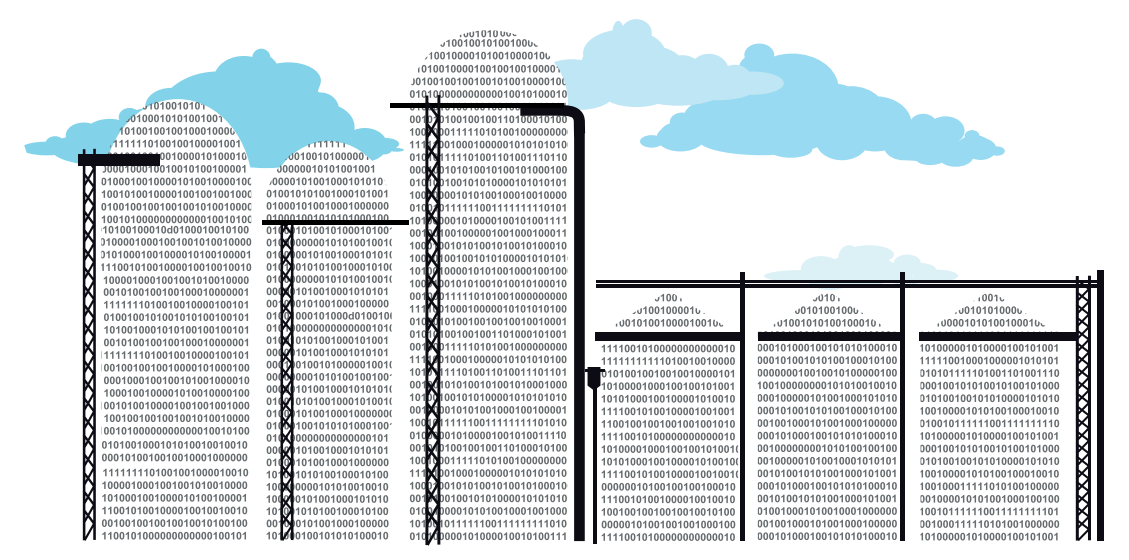The drive towards digital transformation has been given added momentum through the impact of the global Covid 19 pandemic, as well as recent trade disruptions arising out of armed conflict that have shown the importance of building resilient and sustainable digital economies.
This trajectory is certainly a step in the right direction, as outlined in the recently launched Report on the Quantitative Analysis of the Move to Paperless Trade, in which it was highlighted that digital trade facilitation across borders could increase trade across the Commonwealth by around US$90 billion, and legal reform to support the digitalisation of electronic records could unleash as much as US$1.1 trillion, bringing the total benefits from paperless trade to nearly US$1.2 trillion by 2026.

In terms of striking the iron when it is hot, there is no greater time than now to embrace e-commerce, digital trade, and FinTech as critical enablers within the global value chain. Transparency and digitalization engender greater levels of trust; however, countries may be deprived from realizing its ultimate benefits due to the absence of holistic and coordinated strategies in relation to data management and governance strategies, legislation and standardization as well as technical, procedural and financial interoperability.
In essence, despite technology take up and adoption by many countries the failure to take an end-to-end broad-spectrum view of transformation can counterproductively lead to the development of digital islands and siloes that are disparate and surrounded by complexity.
Digital Islands
Data is and has been the new gold for quite a while now, as it is the lifeblood that sustains digital trade, ecommerce and the fintech sector. The increased drive towards digitalization of tradition processes has also been driven by the increased use and inculcation of new and emerging technologies such as IoT, big data and data analytics, machine learning, quantum computing, artificial intelligence, cloud computing, blockchain technology and DLT, to name a few. However, technology is a neutral tool hat is only as effective as the manner
in which it is applied. In this regard, it is absolutely essential to ensure that systems are designed and implemented with integration and interoperability as it core ethos. On a national basis, the framework for interconnectivity of ICT infrastructure and all aspects of data governance should be cohesively addressed within the National ICT Strategy, in order to avert the costly creation of IT Infrastructure siloes that serve as a critical bottleneck. The necessary flexibility should also be built in to allow for public private sector partnerships in driving innovation and the integration of new systems in the future.
 Platforms that make use of new technology, need to be able to connect to one another, or integrate with banks’ existing systems, in order to complete transnational transactions. The problematic issue of digital islands is writ large when the technology players and platforms are spread across many countries.
Platforms that make use of new technology, need to be able to connect to one another, or integrate with banks’ existing systems, in order to complete transnational transactions. The problematic issue of digital islands is writ large when the technology players and platforms are spread across many countries.
There are several ways in which this can be effectively addressed such as the development of common industry standards for data architecture and platforms that facilitate interoperability between systems and jurisdictions. To this end there are several global bodies which have taken up the gauntlet and are making great inroads into this area. The International Chamber of Commerce, through the TradeTrust initiative is working to enable the broadest possible adoption of digital technologies through the development of a multilateral, open legal and technical framework that enables interoperability across different trade platforms and formats for the exchange of digital trade documents on a public blockchain. Additionally, its Digital Standards Initiative is developing open trade standards to facilitate interoperability among the various blockchain-based networks and technology platforms through the Standards Toolkit for Cross-Border Paperless Trade.
On a multi-lateral basis, several countries have also been proactively seeking to build effective trade bridges that promote trade connectivity and interoperability by entering into digital economy agreements such as the recent UK-Singapore Digital Economy Agreement and Digital Economy Partnership Agreement between Chile, New Zealand and Singapore.
In similar vein, the WTO’s Trade Facilitation Agreement (TFA), which came into effect in 2017, has been designed to simplify documentation, modernise trade procedures and harmonise customs requirements. The TFA is estimated to reduce global trade costs by an average of 14.3%, with the least developed countries expected to derive the greatest benefit, and boost world export growth by 2.7%, adding 0.5% of global GDP by 2030. (Reference: Connecting digital islands to transform international trade, gap and boosting growth and prosperity, Michael Vrontamitis, October 23, 2018)
As attractive as the island vibe may be, it stands true that we all have a critical part to play in the global trade value chain and in order for international cooperation initiatives to have a meaningful impact in redefining global trade dynamics, multi-lateral support and inclusion is
necessary.
Development of Legislative Frameworks
 Within the globalized world of transnational trade conducted over several platforms across different countries, it is an essential must that the interoperability of technology is complemented by the complementarity of legal frameworks. In this regard a holistic approach towards legal integration should be undertaken in creating a cyber-secure environment that caters for the transnational nature of e-commerce and recognizes the importance of mutual recognition. This therefore involves the development of overarching legislation in relation to FinTechs, Digital Assets and e-Commerce as well legal frameworks that contain provisions in relation to cybercrime, data protection, cross-border data flows, competition, consumer protection, electronic transactions, electronic payments, electronic transferable records, secure transactions and dispute resolution.
Within the globalized world of transnational trade conducted over several platforms across different countries, it is an essential must that the interoperability of technology is complemented by the complementarity of legal frameworks. In this regard a holistic approach towards legal integration should be undertaken in creating a cyber-secure environment that caters for the transnational nature of e-commerce and recognizes the importance of mutual recognition. This therefore involves the development of overarching legislation in relation to FinTechs, Digital Assets and e-Commerce as well legal frameworks that contain provisions in relation to cybercrime, data protection, cross-border data flows, competition, consumer protection, electronic transactions, electronic payments, electronic transferable records, secure transactions and dispute resolution.
In support of this process, numerous international bodies including ICC have advocated for governments to adopt the United Nations Commission on International Trade Law’s (UNCITRAL’s) Model Law on Electronic Transfer Records (MLETR), which will enable the legal use of electronic transferable documents, including bills of lading, bills of exchange, promissory notes and warehouse receipts, both domestically and across borders.
On the matter of harmonization of law however it is recognized that different jurisdictions may translate MLETR in domestic law based on their own national drafting standards as well as within the context of extant laws. In order to accomplish the overarching goal of allowing for legislative interoperability in support of trade, it would be of great advantage to also work towards the development of a common approach towards the adoption of the Model Law.
Procedural Harmonization, Taxonomy Reconciliation, and Payment System Integration
Bridging the divide not only involves technical and legal harmonization, but also includes the reconciliation differing taxonomies and procedural requirements, particularly in relation to payment, that often convolute the cross-border trade and e-commerce process.
Within a digitalized environment parties need to exchange documents and data in a form that is mutually recognizable and compatible, therefore all information needs to be clearly defined and unambiguous. This naturally involves arriving at consensus in relation to a common taxonomy for definitional content as well as the format of data to allow for seamless transactions to take place.
In recognition of the importance of facilitating this element of interoperability both UN/CEFACT and the World Customs Organization have developed semantic libraries which can serve as the basis for the harmonization across jurisdictions.
In similar fashion, within the past few years we have witnessed the incremental growth of financial technologies as a means of bridging the trade finance gaps fostering digital financial inclusion as well as inculcating great levels of efficiency in transactional payments. However, its true value can only be recognized through the establishment of an interconnected ecosystem that can facilitate end-to-end transactions. This may be somewhat challenging where entities utilize differing proprietary solutions that involve differing back-end processes in order to communicate, share information and transact. This issue may also be further compounded by differing legal recognition and regulatory regimes between transaction countries that widens the innovation gulf and limits the diversity of applications and solutions that are utilized in the trade value chain.
Within recent years, necessity and economic imperatives have served as true catalysts in driving the move towards greater adoption of digitalized solutions as well as Fintech and this has certainly been reflected in according to greater recognition to mobile and digital wallets, Central Bank Digital Currencies (Reference: ECCB Digital EC Currency FAQs and SandDollar) , as well as the establishment of regulatory sandboxes with the aim of creating an enabling environment. This paradigm shift can be a real gamechanger for many countries as it augurs well towards creating an agile ecosystem that can support competitive involvement within a fast-paced global trade environment.
Way Forward
It is evident that digitalization and technology is not a panacea in and of itself, as a fragmented approach can resound in the creation of even greater digital siloes and islands. The adoption of a coordinated and harmonized strategy that is based on best practice standards creates the best competitive advantage on a national basis that also serves as the axis for seamless cross border trade and e-commerce.
Just as no man is an island entire of itself neither is any nation within a globalized world. The essence of globalized trade and ecommerce resides in a series of interdependencies and taking a holistic approach towards building an enabling environment is the sine qua non for not just surviving but also thriving within an increasingly digitized world.
Read our Delivering Seamless Payment Systems in the Public Sector article or click HERE to access our other articles.
For more information, contact the TTIFC HERE
